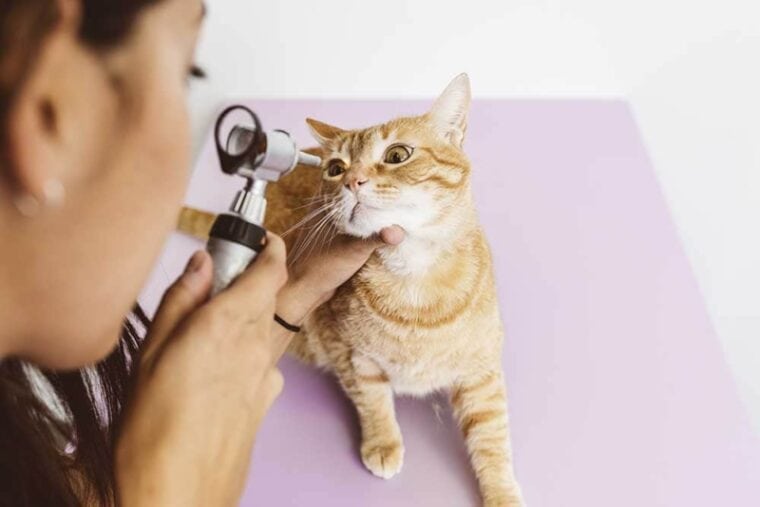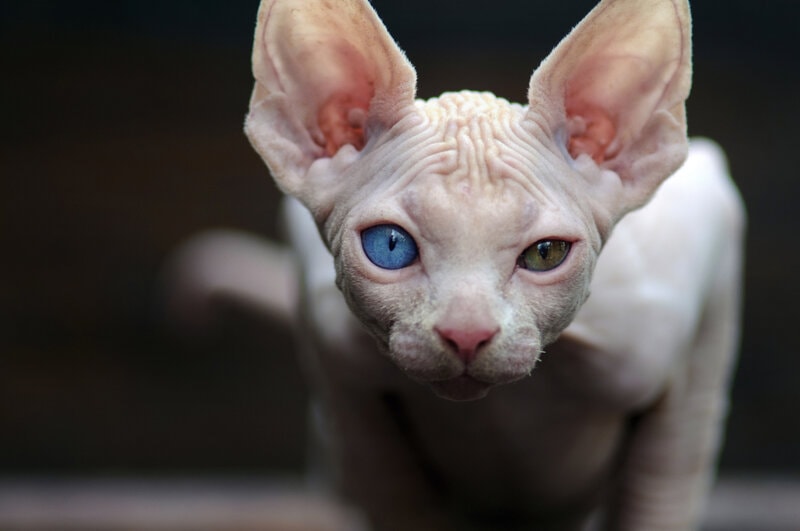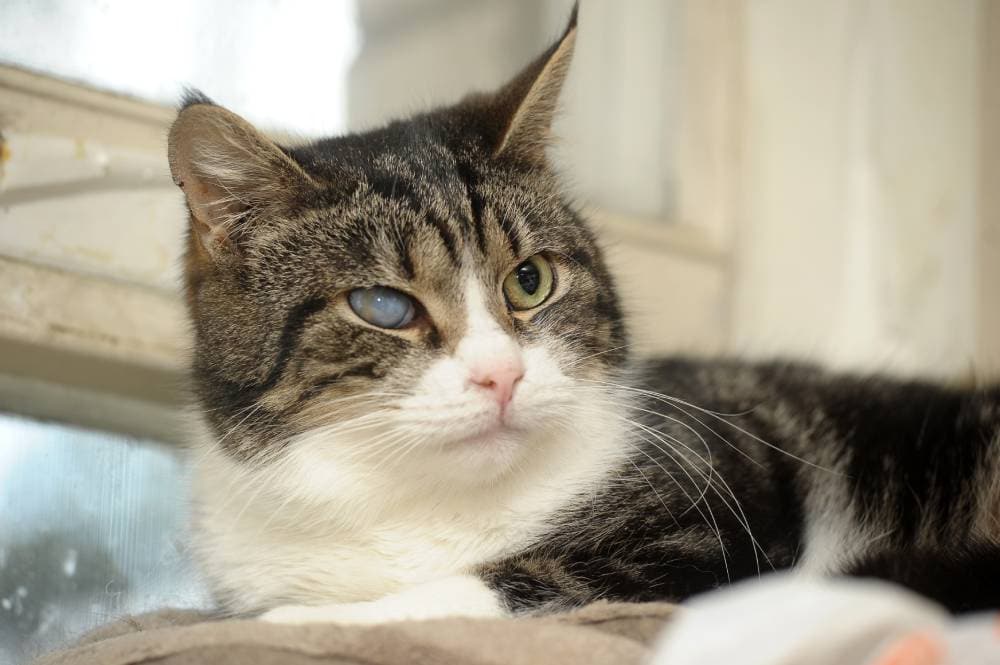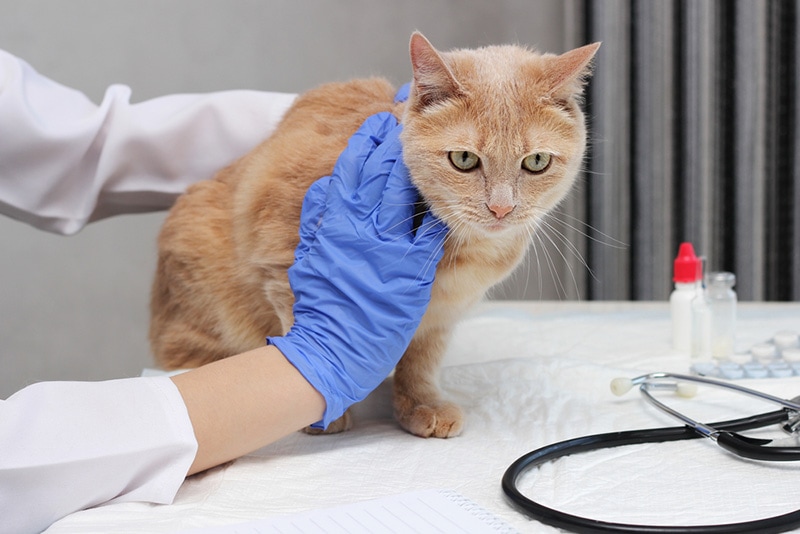
Click to Skip Ahead
A sudden change in your cat’s ability to see can be alarming and may incite panic in even the most seasoned owner. Confirmation of blindness by your veterinarian may feel similarly overwhelming.
The following article will discuss sudden blindness in cats, including its causes, signs, and dangers to help you navigate this condition with calm and confidence. With a little knowledge, patience, and extra TLC, both you and your cat can adapt to a “new normal” in no time!
What is Sudden Blindness in Cats?
Blindness in cats may be acute or sudden. However, slowly progressive vision loss also occurs and tends to be more common. While a decrease in visual acuity may gradually take place over weeks to months, blindness may still appear sudden, as felines can often compensate for a gradual decrease in visual ability until a significant amount of vision is lost.
Before discussing potential causes of blindness in cats, a discussion of the normal feline eye may be helpful. Overall, cat eyes function similarly to those of humans.
Damage to or disease affecting any of these important structures has the potential to lead to blindness in felines.

What Are the Causes of Sudden Blindness in Cats?
The causes of blindness in cats include a variety of different disease processes. If your cat is showing sudden signs of vision loss, the following conditions may be considered:
What Are the Signs of Sudden Blindness in Cats?
Signs of vision loss or blindness in cats may range from subtle to fairly obvious, and can include the following:
The above-noted signs, while not always indicative of blindness, are nevertheless concerning changes and should prompt a timely visit to the veterinarian for further evaluation.
What Are the Potential Dangers of Sudden Blindness in Cats?
Cats that become suddenly blind may be at an increased risk of injury due to falling or running into sharp or dangerous objects. Blocking off dangerous areas of the home, such as high ledges, steep staircases, or hot fireplaces will help keep blind felines safe as they are adapting to sudden vision loss.
Similarly, blind cats that go outdoors may be at a higher risk of injury from predators or vehicles; they may also be more likely to get lost in a less familiar, ever-changing environment. Blind cats may still have a strong desire to go outside, however, especially if outdoor access had been a part of their previous lifestyle. Providing supervised outdoor access with a leash and well-fitting harness may be an option for the adventurous blind feline. Catios or other enclosed spaces may also be a safe way to provide enrichment for cats with a desire to be outdoors.

Frequently Asked Questions (FAQs)
Is Sudden Blindness in Cats Reversible?
Whether a blind cat can regain its vision is largely dependent on the specific cause of vision loss. Early diagnosis and initiation of treatment for eye abnormalities often results in the best outcomes, however, in many cases, blindness may be irreversible.
How is Blindness Diagnosed?
Your veterinarian may use a variety of visual tests to confirm blindness in your cat. These include observing for a menace response, evaluating its ability to track objects through its field of vision, and simply observing its behavior in an unfamiliar setting, such as an exam room.
If your veterinarian suspects your cat is blind, additional tests such as blood work, ophthalmoscope evaluation, tonometry (measuring eye pressures), and blood pressure evaluation may be recommended to identify an underlying cause.

How Do I Care for a Blind Cat?
Maintaining a consistent environment for your blind cat will help make it easier for them to navigate the house. This includes keeping furniture and household fixtures in a similar set-up, as well as keeping their litterbox, food bowls, and beds in consistent locations.
Providing enrichment for your blind companion will help them to continue to live a happy, fulfilled life. Opportunities for play enjoyed by blind felines may include noise-making or treat-dispensing toys. Introducing a scratching post may also be a great way for a vision-impaired cat to express normal feline behaviors.
Conclusion
A wide variety of conditions may lead to blindness in felines. Seeking prompt veterinary attention for any eye abnormalities or behavior changes noted in your cat will provide the best opportunity for treatment and addressing any underlying health issues. If vision loss or blindness is suspected to be permanent, a little extra love, patience, and understanding will go a long way to help your cat continue to live a happy, fulfilled life!
Featured Image Credit: santypan, Shutterstock







